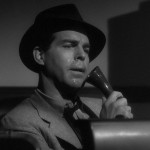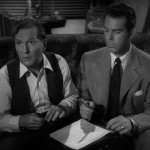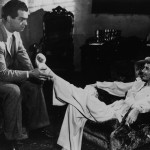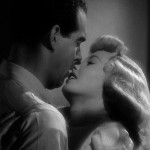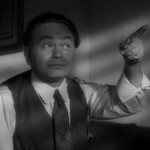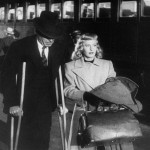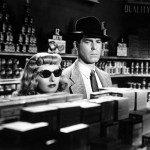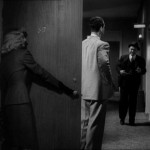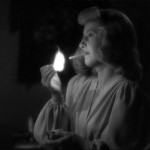
Double Indemnity – 1944
Who knew a movie about insurance fraud could be so good? There were a lot of reasons why this movie took the movie-going public by storm, why critics, even today, praise it for its hard-hitting film noir style, and why it will be forever remembered as one of the great classics of the cinema. Double Indemnity was a story that was told on multiple levels, through its incredible cast of actors, its music, its cinematography, and its brilliant script. The film’s director Billy Wilder knocked this one out of the park.
Many call Double Indemnity the first real example of the film noir genre. It was a film style that has been copied over and over again in Hollywood. Film noir is defined as having (paraphrased from Wikipedia) “a plot about how a crime is perpetrated, told from the point of view of the criminal, psychosexual themes that are explored, and visually dark and claustrophobic framing, with key lighting, casting strong shadows that both conceal and project characters’ feelings. Double Indemnity includes all of these traits.”
When casting, Wilder was turned down by most Hollywood actors, the script being very sordid and dark for its time. But, ironically, three of the highest paid American actors were convinced to do the film. Barbara Stanwyck, Fred McMurray, and Edward G. Robinson played the leads and they were all incredible in their own ways.
We’ll start with McMurray, playing the role of Walter Neff, insurance salesman and all around good guy. The whole film takes place from his perspective. Within the first few minutes of the film, he confesses to committing fraud and being a murderer. He also explicitly states his motives, saying, “Yes, I killed him. I killed him for money – and a woman – and I didn’t get the money and I didn’t get the woman. Pretty, isn’t it?” Then the rest of the movie is the flashback which tells us how it was all done.
McMurray was wonderful in the role. He knew how to play both the nice guy and the cold murderer. He knew how to put you at ease before making you feel uncomfortable, and he did it all with a hard edged cynicism that kept you guessing which way he was going.
Stanwyck was also a powerful screen presence. She was the shady, sleazy woman who was a cool killer. Her character, Phyllis Dietrichson, wanted her husband dead, so she seduces Neff and manipulates him into committing the murder. Stanwyck was incredible in her cold, emotionless demeanor. The subtle looks, the insanity boiling under the surface, the determined focus, and the uncaring selfishness all added up to make a very stylized, and yet convincing, character.
And finally Robinson, who really surprised me with the sharp and powerful portrayal of Barton Keys, Neff’s co-worker and long-time friend. His job at the insurance agency was to find fraud and root it out. I could tell, just by watching Robinson, that he knew his part in-side-and-out. He was perfect in his delivery, his mannerisms, and his motivations. Very well done, Mr. Robinson!
The cinematographer also made great use of lighting, casting shadows everywhere. He made wonderful use of venetian blinds to cast shadows that looked like prison bars, giving the whole film a trapped and claustrophobic feel.
I also have to mention the genius of the film-score by Miklos Rozsa. It had incredible tension and danger in all the right spots. It was dramatic without being melodramatic. Of course, Rozsa is also known for writing other great scores like 1945’s The Lost Weekend, and 1959’s Ben-Hur. He truly was a master of his craft.
And finally I have to mention the director, Billy Wilder. He had a vision of a particular style that was all his own. He seemed to be involved in every aspect of the film, putting his own touch, his own imagination into its making. He did a wonderful job spearheading the project and I was both surprised and disappointed to learn that though the film was nominated for 7 Oscars, it didn’t win a single one. It was beat out for Best Picture by Going My Way, which in my opinion, was a far inferior film. Wilder, you got robbed!
A little bit of interesting trivia I found while reading up on Double Indemnity was that Barbara Stanwyck originally didn’t want to take the part of Phyllis because she didn’t want to tarnish her Hollywood image by playing a murderess, saying, “I said, ‘I love the script and I love you, but I am a little afraid after all these years of playing heroines to go into an out-and-out killer.’ And Mr. Wilder – and rightly so – looked at me and he said, ‘Well, are you a mouse or an actress?’ And I said, ‘Well, I hope I’m an actress.’ He said, ‘Then do the part’. And I did and I’m very grateful to him.” So are the rest of us.
